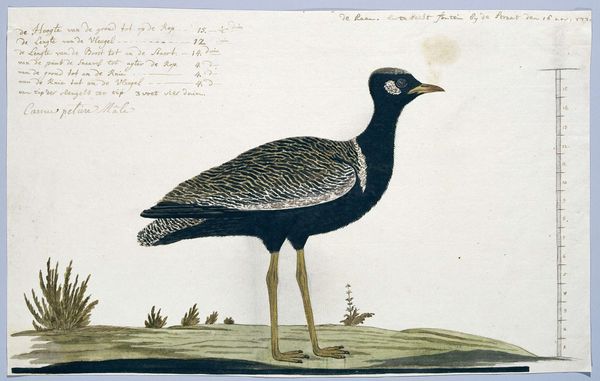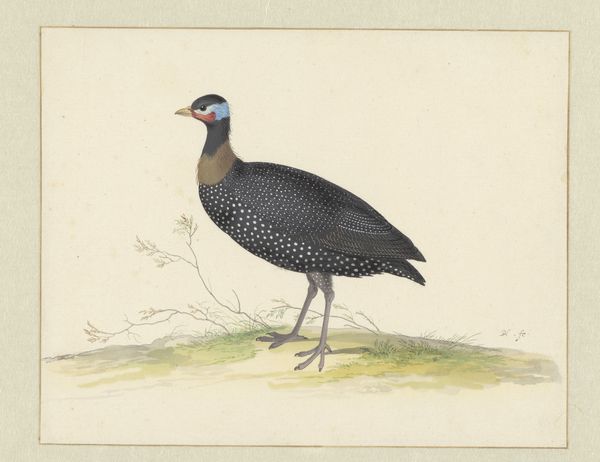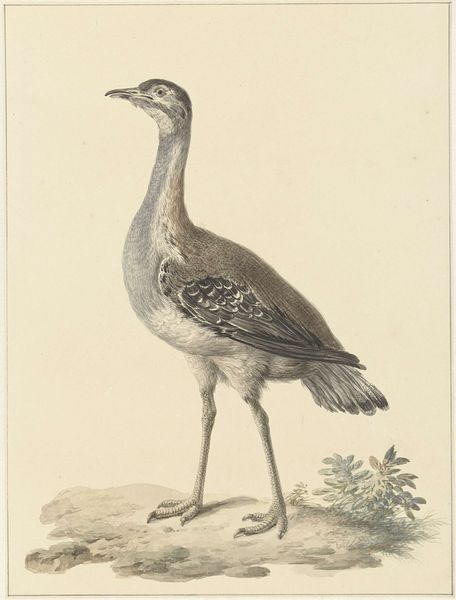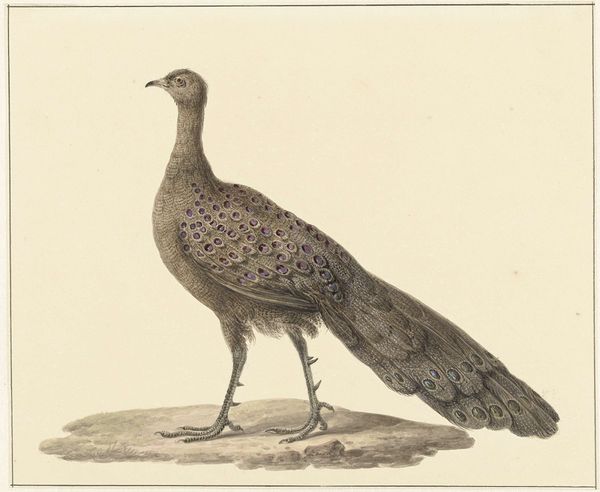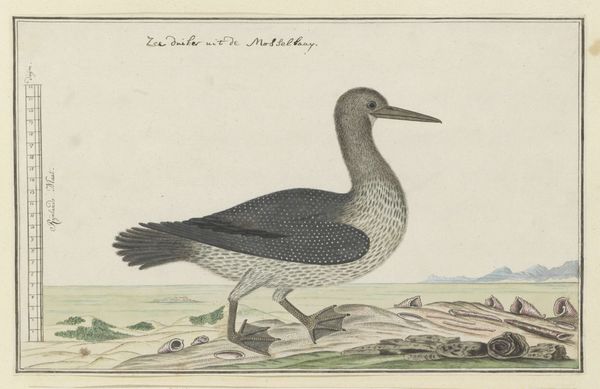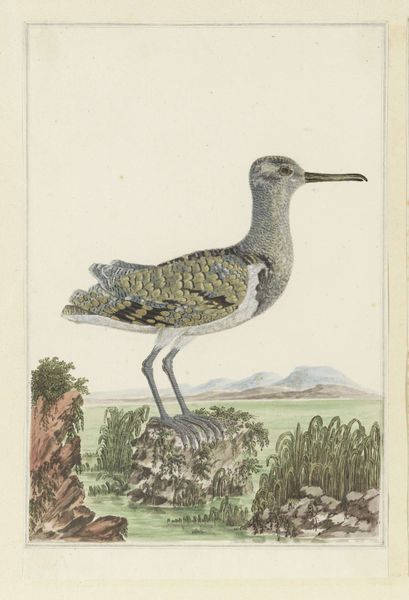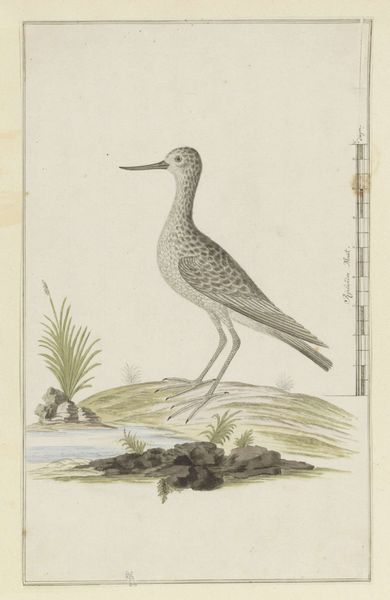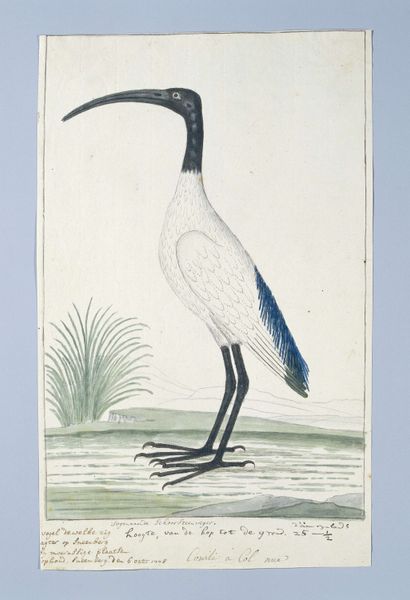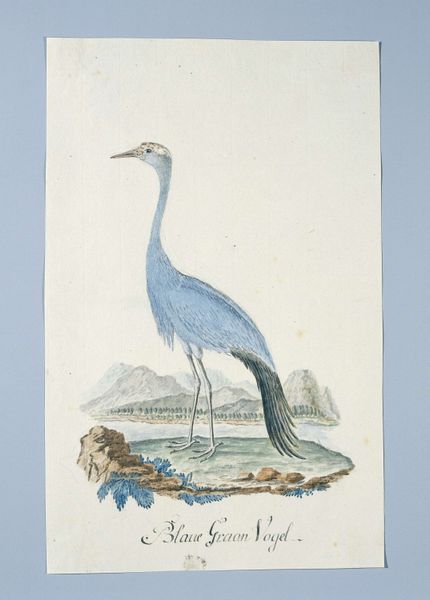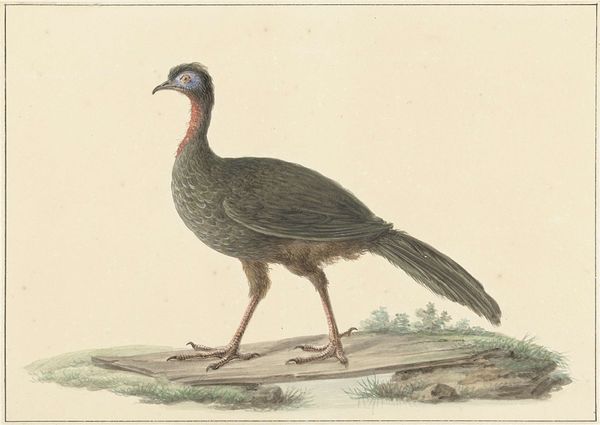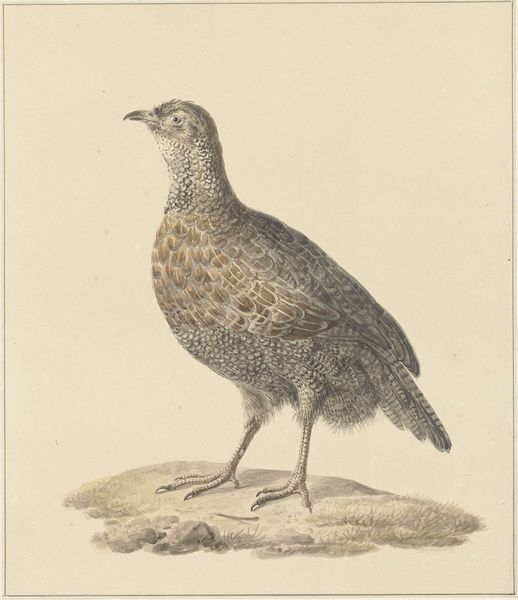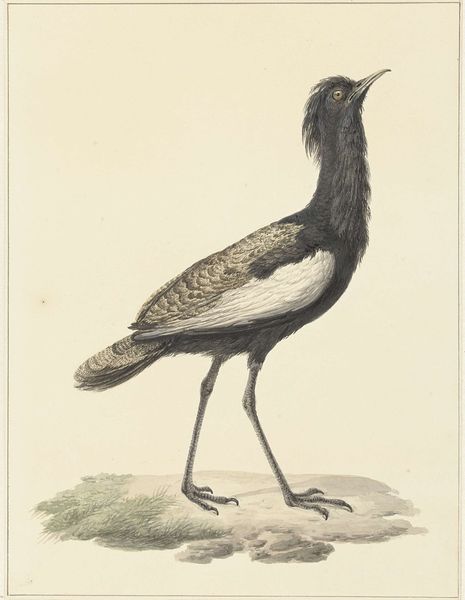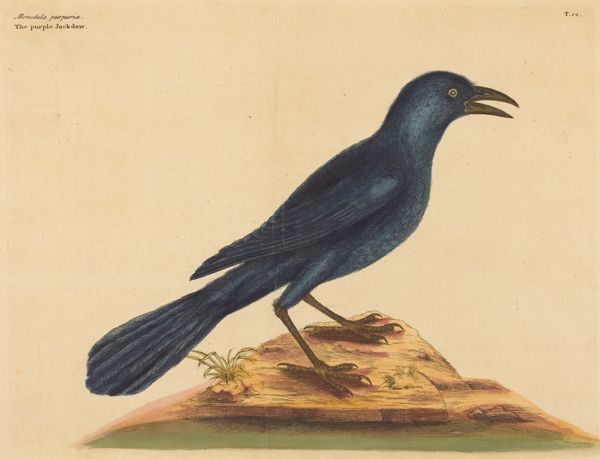
drawing, paper, watercolor
#
portrait
#
drawing
#
baroque
#
paper
#
watercolor
#
coloured pencil
#
watercolour illustration
#
naturalism
#
botanical art
#
watercolor
Dimensions: height 175 mm, width 212 mm
Copyright: Rijks Museum: Open Domain
Curator: Let's explore this delicate watercolor and graphite drawing titled "Spotted Crake (Porzana porzana)?" crafted between 1687 and 1692 by Pieter Withoos. It depicts, rather precisely, a single bird. Editor: My first impression is of its slightly melancholic stillness. There's a quietness about the composition. It is very delicately colored with subtle naturalism of a perched grey bird. Curator: I see that stillness, too. In Withoos' era, such depictions weren't simply observational. Birds, particularly, carried strong symbolic weight often related to spirituality or messages between worlds. The crake itself, a bird of marshes, may have represented hidden things, things just out of view. Editor: That's fascinating, especially when considered against the backdrop of 17th century Dutch naturalism, where precise depictions of flora and fauna reflected a growing scientific interest, but were always grounded in a socio-political reality in which new global markets increased interest in trade and colonial enterprise, that required botanical and natural inventories to become commonplace. The purpose then becomes more administrative and scientific. The precision of this illustration serves the purpose of natural documentation for the purposes of knowledge acquisition. Curator: An interesting divergence in perspective. It would have been commissioned, of course, likely destined for an album or compendium, where the image assumes a greater scientific rather than decorative role, though it possesses both. It allows both detailed study and appreciation for the intricacies of the avian form, while invoking something akin to reverence for natural order. The pose isn't quite static but carries dignity; the gaze holds an introspective quality, wouldn't you say? Editor: I agree, though this is what is commonly expected in the representation of animals, they seem imbued with a certain consciousness. The effect comes from the tradition, as opposed to being innate. I imagine there were entire systems for illustrating animals during the Baroque era. Withoos had most likely received specialized training to generate images of that type, it had little to do with personal intent or choice, but it falls strictly under art-making conventions of the day. Curator: Perhaps. What fascinates me is the continued resonance of these older systems, which, even across the centuries, seem able to awaken innate intuitions. The image persists as more than the sum of scientific intent. Editor: Ultimately, I am left thinking of art-making's conventions across eras and social groups and their ability to change our own expectations about certain forms of knowledge that are being projected in illustrations such as Withoos' work. Curator: I am struck by how such a simple image reveals that interplay of social demands, observation, reverence, and sustained echoes in visual understanding that transcends any historical intention.
Comments
No comments
Be the first to comment and join the conversation on the ultimate creative platform.
